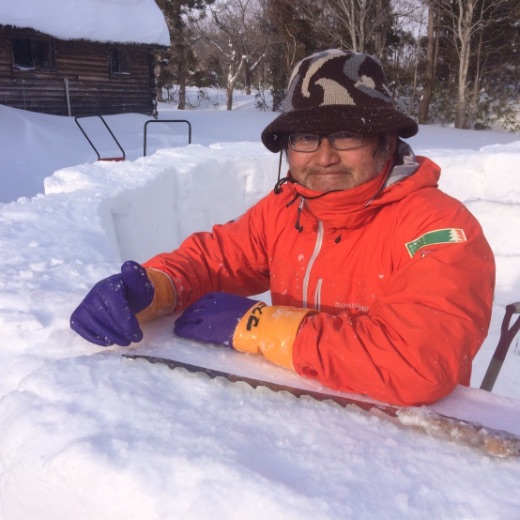
Representative director
Toyoshi Sasaki
Born in Iwate in 1957.
I was born and raised in Iwate, and the influence of various childhood experiences spending time in nature led me on the path to outdoor/adventure education. The 1992 Rio de Janeiro Earth Summit inspired me to also become interested in environmental issues. In 1996, I used my own money to open Kurikoma Kougen Nature School, ever since then putting education into practice to provide a place to nurture young people’s power to live. I’m working to make society and individuals who can create rich sustainable ways of life coexisting with nature. After the 2008 Iwate-Miyagi earthquake, I lost my main base of activity for years. After the 2011 earthquake and tsunami, we were one of the first to set up a volunteer center, rushing to start support work, which led to contributing to the Michinoku Coastal Trail, one of the Ministry of the Environment’s disaster recovery projects.
Currently I am researching nature experiences and environmental education’s role in society at Aomori University’s Faculty of Comprehensive Management, promoting SDGs both within and without the university.
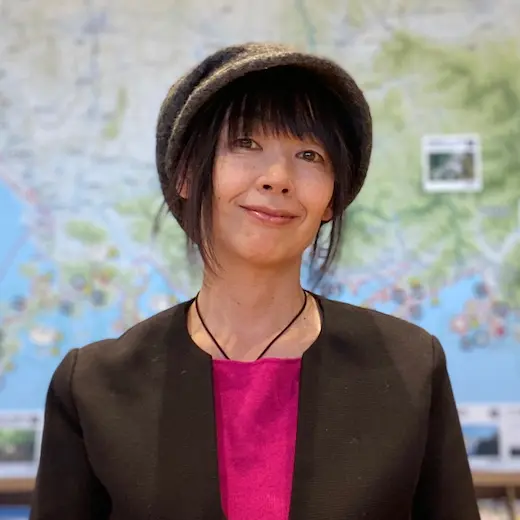
Managing Director
Kumi Aizawa
I was born in Tokyo in 1969 and raised in various parts of Japan and on the east coast of the US.
I grew up here and there in various parts of Japan, from early childhood on growing up immersed in nature, with the ocean, mountains or rivers nearby. I spent six years during high school and college in the US before returning to Japan. After that I started doing work in team-focused creative efforts including magazine and book editing, film-making and local art projects, using my architectural design office as a base. Since 2011, I’ve been going to coastal Tohoku, learning a lot and being supported by many people. Starting in 2015, I contributed to the creation of the Michinoku Coastal Trail management plan, then founded Michinoku Trail Club. I became fascinated with the joys of journeys on foot, and fostering hiking culture is my life’s work. I spend my days grateful for all the people who work alongside us.
My other hats include representative director of Shinsai Regain, director at silent voice, Trail Blaze Hiking Lab, RQ Disaster Education Center, and Mother Architecture, and starting in April 2021, a guest professor at Aomori University. Also in 2023, I become an advisory panel member of the Central Environment Council Nature and Environment Section Natural Park Subcommittee and a director of the Natural Parks Foundation.
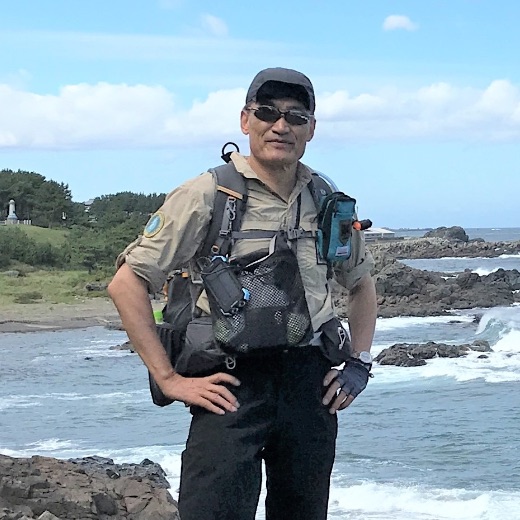
Director
Masayoshi Kato
I was born in Saitama. After retiring from a long career in high school education, and hiking the Shinetsu Trail once a year, I became a director at Michinoku Trail Club from the time it was founded through a connection with my older brother, Noriyoshi Kato. I’d heard from my brother many times since around 2006 how he wanted there to be a trail going through the Sanriku coastline (at the time, calling it the “Sanriku Trail”). I think Noriyoshi must be very happy that his dearest wish came true in June 2019, when the Michinoku Coastal Trail, the longest national trail in Japan at over 1000 kilometers long, fully opened. Over a series of section hikes, I’ve walked the entire Michinoku Coastal Trail, wearing my brother’s bandanna and accompanied by memories of my brother who didn’t get to hike this trail himself.

Director
Aki Matsui
One of the Michinoku Coastal Trail’s diehard fans.
My involvement started in 2017 through work, and before I knew it I was a director of Michinoku Trail Club. I am obsessed with what I’ve encountered on the Michinoku Coastal Trail: the beauty of the ocean, the wide open skies, the breathing of the forest, the glittering streams, and above all else the warm friendliness of people I encountered. Since 2021 I’ve become a Trail Angel based on the south end of the Sanriku Fukko National Park so I can spend more time with some of my favorite kinds of people, rich spirited long distance hikers. I’m planning to enjoy myself and make the Michinoku Coastal Trail last for the next 100 years as a start.
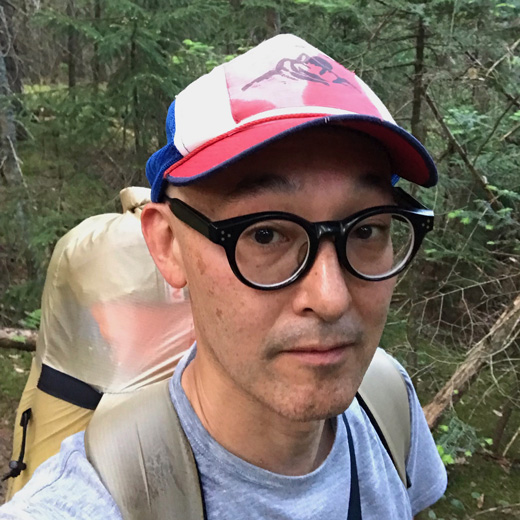
Director
Tomoyoshi Tsuchiya
Born in 1971. I was fascinated by a copy of “Introduction to Backpacking” picked up at a used book store, and started mountain climbing with my university’s exploration club. After graduation, while working at an outdoor shop I discovered the world of ultralight hiking and rediscovered what’s so wonderful about journeys on foot. In 2008, I opened Hiker’s Depot, a store in Mitaka, Tokyo specializing in ultralight hiking and long distance trails. I myself have gone overseas to thru-hike the John Muir Trail and Colorado Trail, and in 2019 visited the Long Trail in Vermont, which is the oldest long distance trail in the United States. Within Japan I have done long distance hikes including a 300 kilometer mountain hike from the Okutama range to the Northern Japanese Alps.
My wife’s family home is in Miyako, where her family works with marine products, so I feel a close hometown-like connection to the Michinoku Coastal Trail. I’ve also had the opportunity directly hear the departed Noriyoshi Kato’s passion for this trail, and I very much want to attain a world class long distance trail in our hometown.
I actively take part in not only running a store but also venturing out to events and more, sharing the wonders of ultralight hiking and long distance trails. Author of “Ultralight Hiking” (Yama-Kei Publishers Co) and co-author of “Enjoying No-Man’s Land: Traveling on Human Power and the Art of Camping” (Graphic-sha Publishing Co.)
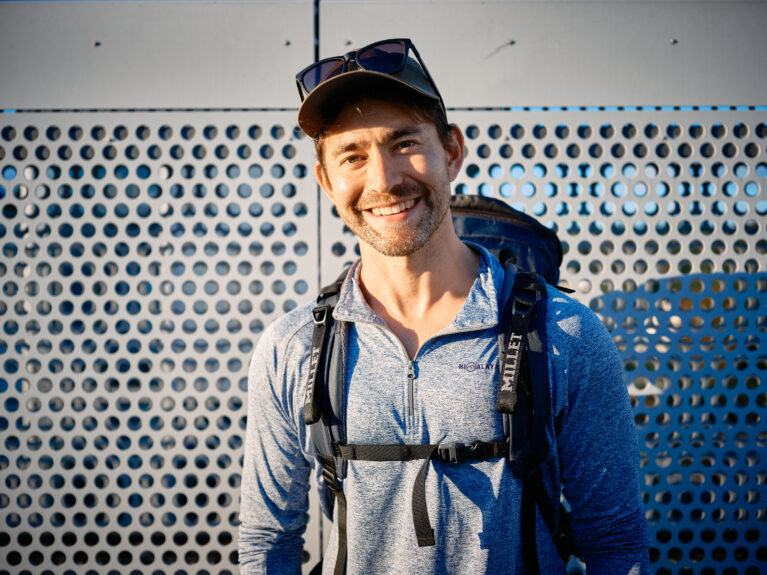
Director
Robin Takashi Lewis
With roots in Japan and the UK, Robin fell in love with the outdoors as a child. Since first walking along the Michinoku Coastal Trail in 2017, he launched an English-language website, created digital route guides, and built an online community to introduce the trail to international hikers. In 2022, he thru-hiked the trail, an experience that cemented his belief in its power to connect people, landscapes and stories.
As a social entrepreneur and educator, Robin serves as Co-CEO of Social Innovation Japan, working to address social and environmental challenges through collaboration and creativity, including designing learning programs with universities and business leaders. He also co-founded ‘mymizu’, Japan’s first free water refill app connecting people to refill spots worldwide to reduce plastic waste.
Robin has walked trails in countries including Turkey, Morocco, Spain, Germany, and the UK, and also trained at the Himalayan Mountaineering Institute, India. He believes trails are more than routes – they are living spaces for connection, exploration, and joy.
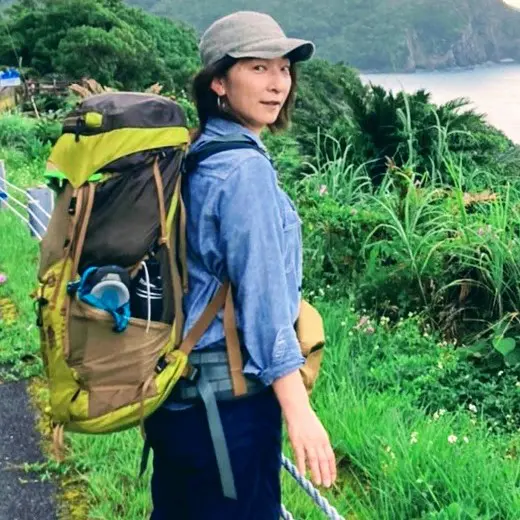
Director
Chie Iwata
I’m from Aichi Prefecture and have lived in southern Miyagi since 2020.
I started mountain climbing in my late 30s and it became a way of life for me. After quitting my company job to travel, I spent a year going everywhere from Rebun Island to Yakushima Island. And then I also went to New Zealand to hike the Milford Track and Routeburn Track. Then I became a “wandering career consultant.”
Enjoying a warm welcome from local people, experiencing local life, hearing what people think about their area. I enjoy walking freely wherever I want, but it’s also nice to walk alongside a local guide and learn new things. I’ve learned that depending on local people helps lead to a sustainable society.
The origin of the English word career is “wheel tracks,” meaning the course a person goes along. Currently as the director of “EN and” I provide career support consulting, career consulting for the Ministry of Health Labor and Welfare, provide training for career consultants, and work as a Future With Forest Association Certified Shinrin-yoku (forest bathing) Facilitator.
Secretariat
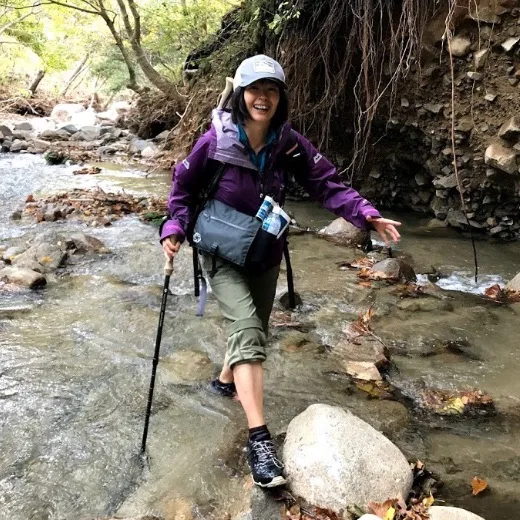
Secretary-General
Kumi Aizawa
I have been involved with the MCT since the creation of its management plan, and in 2017 founded Michinoku Trail Club. This organization started with three members, but seemingly overnight it’s grown to eleven total staff members and three part time workers, all working together to manage Natori Trail Center and the 1000 kilometers of the MCT. The Michinoku Coastal Trail takes collaboration over a wide area between the Ministry of the Environment, four prefectures and 29 municipalities, local groups, residents and more. All the hikers coming to walk the trail and donating members are also a vital piece of the puzzle. Natori Trail Center is a place for center visitors, volunteers and local people to come together and do something exciting. I hope we can all make the trail center a more and more amazing place together.
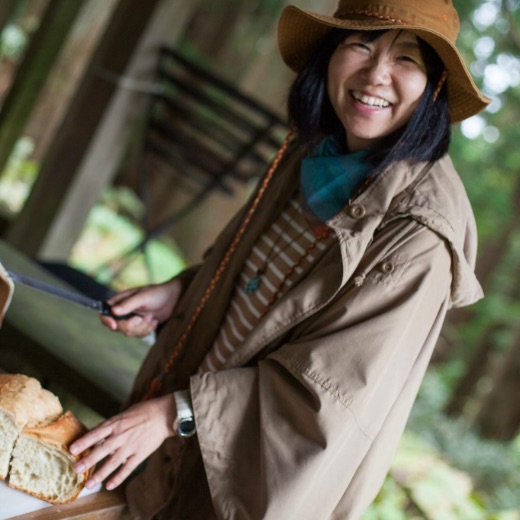
Deputy Secretary-General/Natori Trail Center Deputy General Manager
Masami Itabashi
I have been working to promote what’s so great about this trail since my previous position managing public relations for the Michinoku Coastal Trail at the Ministry of the Environment Tohoku Regional Environment Office. I was born and raised in Miyagi. After living through the 2011 earthquake and tsunami, I wanted to do something to help promote recovery from the disaster in even a small way, and fate or chance led me to this work. I remember feeling strongly attracted to the fact that the Michinoku Coastal Trail would convey memories of past disasters to future generations and bring about new connections between local people and those who come to hike the trail, and thinking “I want to see the day when this trail is complete.” As this trail started to connect together little by little, so did my heart start to gradually turn away from the memories of that day in 2011 and towards the future. Just as there are hikers whose perspectives on life change as they walk a path, there can also be people whose perspectives on life change while helping to form that path. The latter is who I am now.
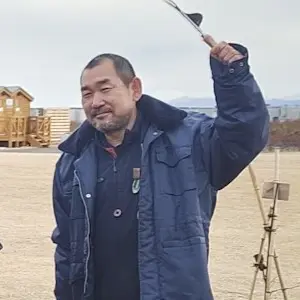
Deputy Secretary-General
Isao Hareyama
I joined Michinoku Trail Club as a staff member on April 1, 2022. I was in the first graduating class from the Iwate Prefecture Commercial High School information processing course, thinking “the IT age is coming” (though at the time they didn’t call it “IT” yet), and then worked as a software engineer, but eventually ended up here at Natori Trail Center after working at the Ishinomaki Ranger Office.
From April to May 2022, I thru-hiked the MCT, thinking about things like, why did fish decide to come to land, why did monkeys strive to walk on two legs, and how was I going to feel when I made it to Hachinohe. I’m looking forward to sharing time with you and the MCT together.
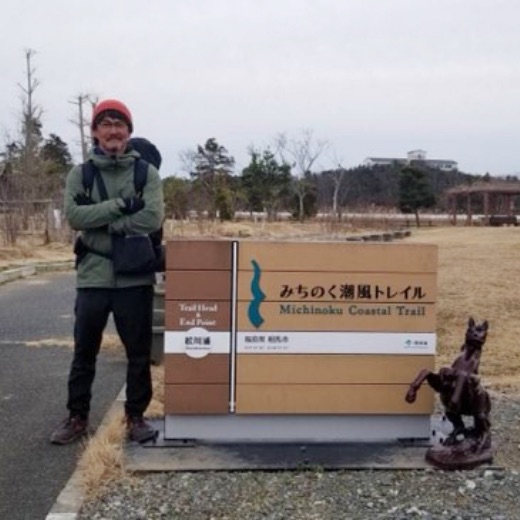
Natori Trail Center General Manager
Manabu Itaya
Born June 1st, 1962.
I had decided to spend 2019 traveling throughout Japan in a camper van, hiking mountains and trails, and was getting ready for my journey when I joined “Long Distance Hikers Day” at Hiker’s Depot on a whim. There, I got to hear Mr. Tsuchiya and Mr. Hasegawa of Hiker’s Depot speak passionately about the Michinoku Coastal Trail. I thought, I definitely need to hike this trail, and as a hiker in Japan I need to help this trail grow. That was how it all started. After hiking mountains in Kyushu and Hokkaido and trails including the Kitanemuro Ranch Way and the Shinetsu Trail, I was about to start my thru-hike of the Michinoku Coastal Trail in October 2019 when Typhoon Hagibis struck. As I postponed my start date and waited for a suitable time to start my hike, I was invited to participate in surveys to assess typhoon damage on the trail in November. A few months later, I started my journey from Hachinohe, Aomori, thru-hiking 47 days to reach my goal at the southern terminus in Soma, Fukushima.
This journey of 1025 kilometers taking with my own two feet was even more amazing than I had anticipated. After my hike, I started working at Michinoku Trail Club’s headquarters in February 2020. I experienced so much kindness as a hiker on the Michinoku Coastal Trail and I aim to spend my time working at Natori Trail Center paying that kindness forward to current hikers.
The Michinoku Coastal Trail brought many things and so many people to me. To me, it was less Trail Magic, and more like it was a Magic Trail.
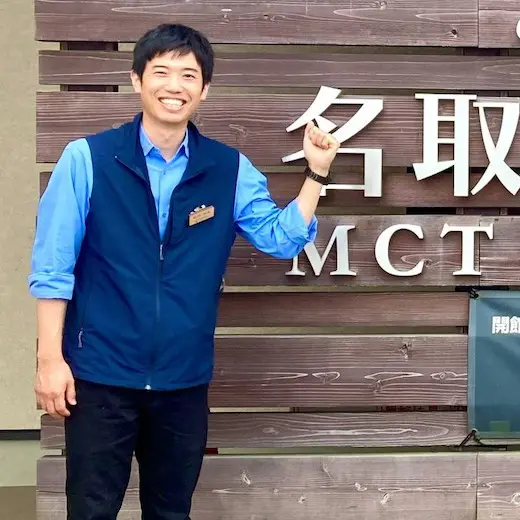
Trail Management
Ryota Matsukawa
I’m from Oyayama Prefecture, and came to Tohoku because I was fascinated with the Michinoku Coastal Trail as a long-distance journey on foot where you can experience diverse nature and history. From October to December 2022, I thru-hiked the MCT. My biggest challenge now is figuring out how to best use my experience to make the MCT more widely known and loved by hikers and local people.

Revenue Division
Masumi Yanagita
I was born in Ibaraki Prefecture, and then moved to Tokyo for college. I fell in love with camping which led to a hiking awakening.
I got really into longer, take your time walking for days hikes: the Takashima Trail, Shinetsu Trail, Tokai Nature Trail, the Izusanryosen Trail and Nishiizu Trail, etc…
While I was living in Tokyo, I’d come to section hike the Michinoku Coastal Trail and fantasized about what it would be like to live in Tohoku. In summer 2022, I made the decision to quit my previous job and go hike the Colorado Trail in the US. And then fantasy became a reality for me in October 2022 as I moved to Tohoku and started working at Michinoku Trail Club.
Looking forward to meeting you!

Misaki Oka
I’m from Onagawa Town in Miyagi, and grew up on a diet of lots of fish and Napolitan pasta.
I thought Kyushu’s food looked tasty, so I went to a university in Fukuoka and over four years enjoyed lots of delicious tonkotsu ramen. Kyushu was wonderful, but I wanted to do work for my home region of Tohoku, so I came back to Miyagi.
Through working to promote the MCT, I hope to show lots of people what’s so great about Tohoku.
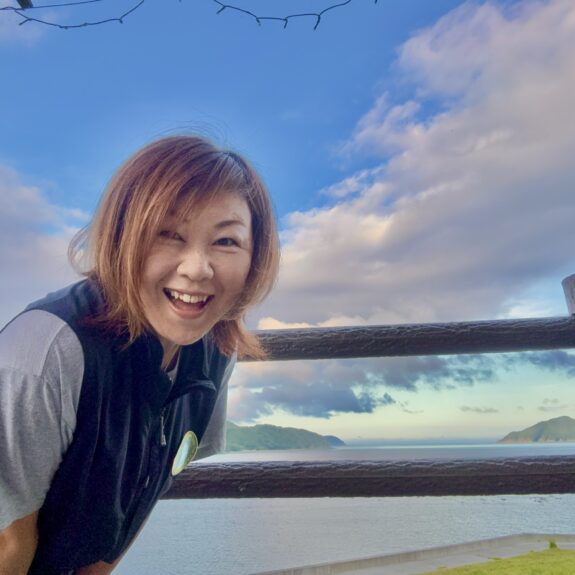
Regional Office Manager
Mayuko Sakamoto
Born in Sanriku Town, Ofunato City, Iwate Prefecture. I spent nearly 20 years in the Kanto region for university and work, but the Great East Japan Earthquake caused me to reexamine my life. Since returning to my hometown with my two sons in 2015, I have been asking myself what a ” hometown to be proud of ” means to children living here.
I was involved in the Michinoku Coastal Trail as an Active Ranger before the entire trail was opened, and I feel that there is infinite potential in the Michinoku Coastal Trail. As a newly appointed “Regional Office Manager”, I want to run around to bring energy and smiles to the people living along the trail.
This beautiful Tohoku-Sanriku, inherited from our ancestors, will become a destination for many people through the Michinoku Coastal Trail, and the day is not far off when it will become the Tohoku-Sanriku of the world!
Let’s hike MCT together!

Mizuho Hayasaka
I’m from Iwaki City in Fukushima and live in Natori. I’ve started working at Natori Trail Center since April 2023, coming to the center three times a week.
In high school I joined the mountaineering club for the skiing and going to hot springs, but I liked going down off the mountain more than I liked going up. I got into scuba diving in college and turned my focus away from land and more towards sea, but then I got caught in the outdoors activity trend and my passion for camping reignited. At Natori Trail Center, I was introduced to the world of long distances trails and the joys of journeys on foot.
I do mostly office work support at the center, and hope I can help lots of hikers and local people meet and get to know each other through the Michinoku Coastal Trail.
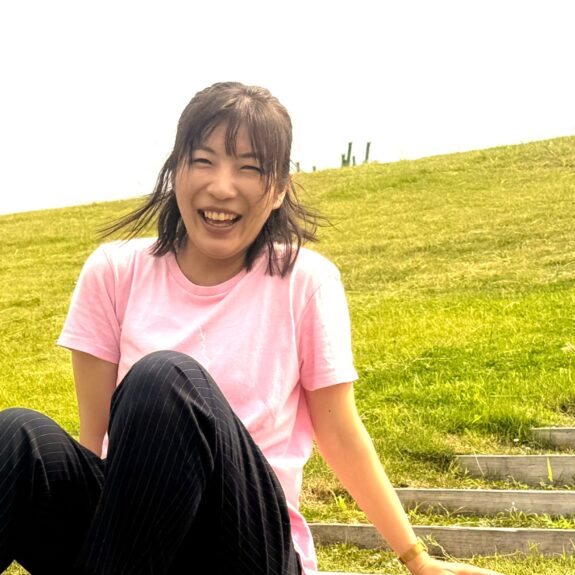
Yuriko Takahashi
Born in Miyako City, Iwate Prefecture. Even before the Michinoku Coastal Trail was fully opened, I have been involved in road maintenance, PR events, operation and management in the northern coastal area of Iwate Prefecture and also around Ishinomaki City of Miyagi Prefecture.
My job mainly involves updating website information and clerical work, but I want to support the Michinoku Coastal Trail so that everyone can walk safely and enjoyably, and so that it will continue to be loved by many people as an irreplaceable place.
The Michinoku Coastal Trail connects the daily life of the Sanriku coast and the unique lifestyles of each region in a single string. I hope that the scenery and encounters that change with each walk will leave warm memories in the hearts of those who visit.